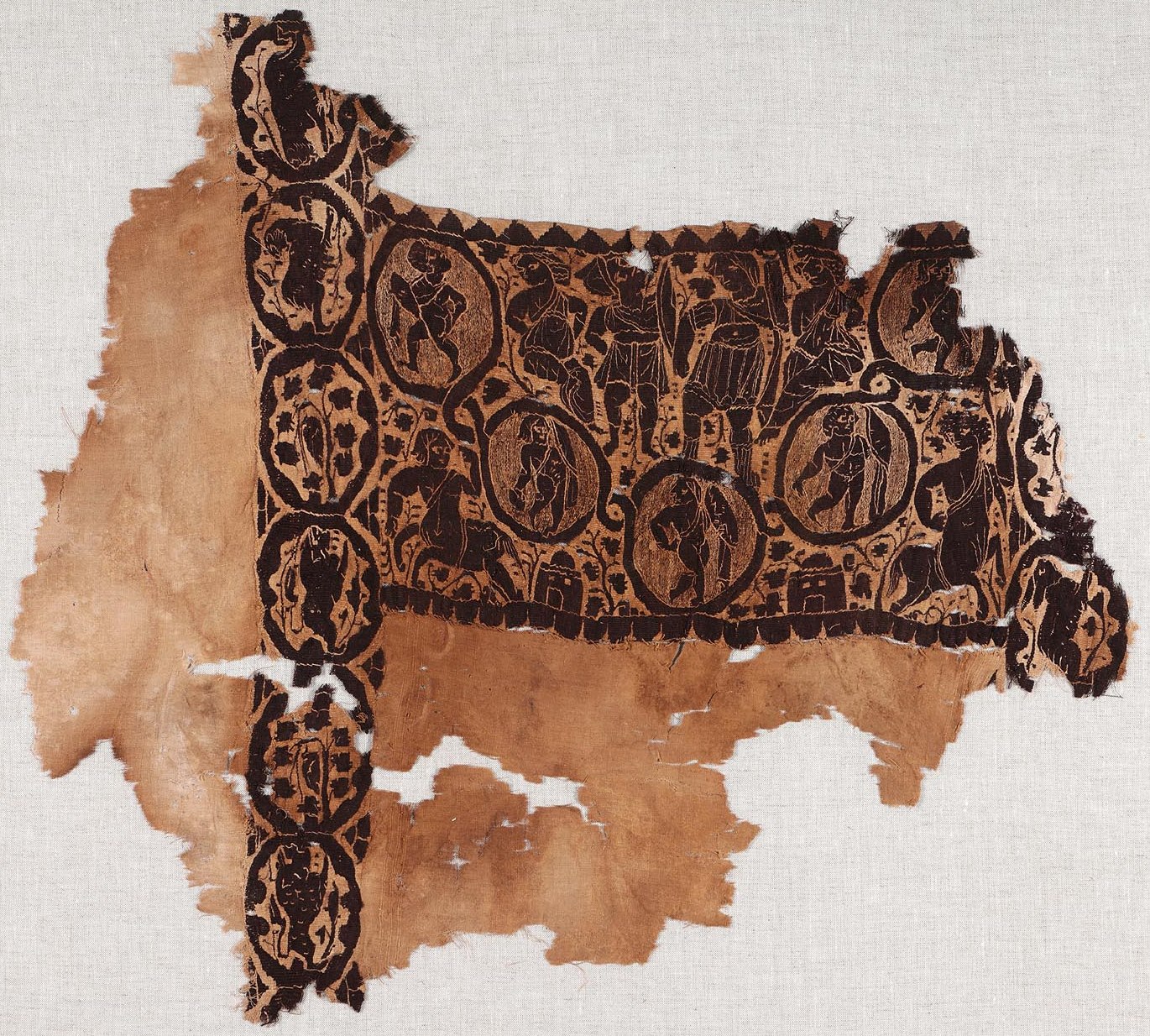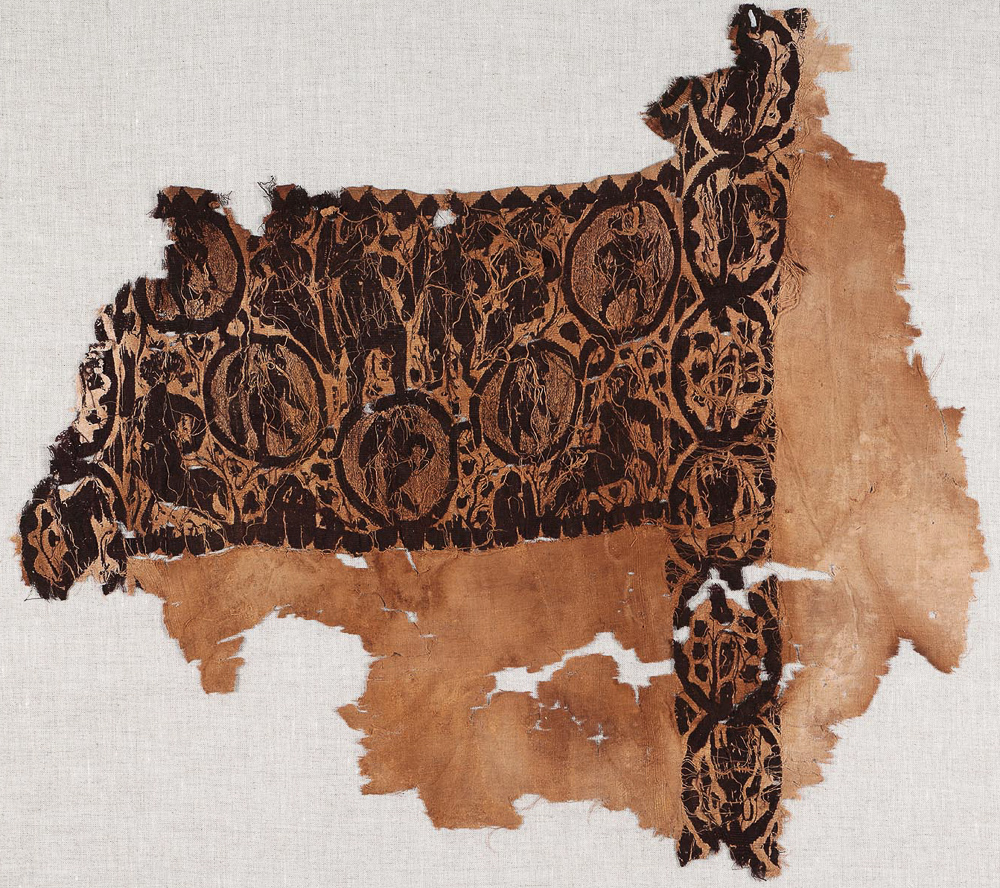Three motifs, arranged in a semi-circle, decorate the wide rectangular band. At the top, in the centre, are two standing figures and two seated women, with their arms behind their back. In each of the lower corners is a centaur and a distant Nilometer (?). Between these two scenes are warriors, in a garland of interlaced medallions.
Origin:
Egypt
Date:
4th - 6th century
Material:
Linen and wool
Dimensions:
Warp: 53 cm, weft: 47 cm
Comparisons:
Pushkin Museum, inv.5823: complete tunic.
MET, New York, inv. 90.5.873.
Louvre, inv. AF 5448: Nilometer.
Provenance:
Collection Coptic textiles Fill-Trevisiol: donation
Location:
Musée royal de Mariemont
Inwoven woollen tapestry
I. Ground weave
Warp:
natural-coloured linen S: 32-34/cm
Weft:
natural-coloured linen S: 20/cm
Weave:
warp-faced tabby
Other features:
selfbands: composition of each band: 2x4 yarns/pick + 4x1 yarn + 2x4 yarns/pick + 4x1 yarn + 2x4 yarns/pick
II. Tapestry areas
Warp:
linen S
Weft:
purple wool Z: 60/cm; natural-coloured linen S: 48/cm, two yarns/pick
Weave:
extended tabby 2/3
Ribs per cm:
11-12
Sewing Yarn:
slit tapestry, eccentric weft, flying thread brocading for details only, vertical weft brocading, soumak; False harching: paired weft: 1 wool + 1 linen yarn/pick; long slit between ground weave and neck panel is closed with sewing yarn linen S2Z; finishing of the neck opening: simple selvedge, no strengthening
Dyes analysed:
Weftthread: purple Z wool: madder, indigo/woad


